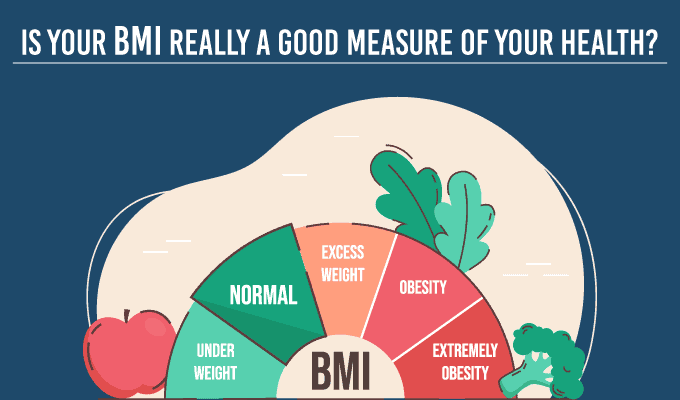Looking For A Personal Fitness Trainer in Mumbai? Call Me Now on +91 98706 36408


BMI stands for Body Mass Index and is a measure of health based on the height and weight of an individual. BMI is used to quantify tissue mass. It is a general indicator to categorise an individual into underweight, appropriate weight, overweight or obese categories.
To learn your BMI score, the formula used is = mass (kg)/ height2 (m)
Take control of your health and fitness journey with a personal trainer
Contents
The BMI classification chart as per the World Health Organization (WHO) for both men and women of 18 or above age is:
| Category | BMI range – kg/m2 |
| Severe Thinness | < 16 |
| Moderate Thinness | 16 – 17 |
| Mild Thinness | 17 – 18.5 |
| Normal | 18.5 – 25 |
| Overweight | 25 – 30 |
| Obese Class I | 30 – 35 |
| Obese Class II | 35 – 40 |
| Obese Class III | > 40 |

Try and maintain your BMI below 25kg/m2. Any number beyond 25 kg/m2 may face an increase in health issues, according to the centres for disease control and prevention:
These are some possibilities that a person with high or low BMI can face. But we also see similar issues with people having normal BMI. So if someone looks healthy, is she/he actually healthy?

BMI takes into consideration the weight and height of an individual. But, at times, body composition and BMI doesn’t go hand in hand. Two people of the same age, height and gender might have different body compositions. It depends on the muscle mass and fat mass of the body. With the same impact of a fall, an underweight person might fall and get a fracture, but an overweight individual might not get injured at all. This can be because the bones of an overweight person might be strong and free of any deficiencies. Whereas an underweight or normal person can have calcium and vitamin D deficiency.
A person with a normal BMI might have more visceral fat compared to a person with a high BMI. A person with heavy muscles might have a high BMI, but the body fat is very less. BMI is one of the assessment tools to categorise people into healthy or not healthy categories concerning weight. So, then what is good health?

Good health means the absence of any diseases, normal metabolic processes, and no nutritional deficiencies.
It includes:
BMI is freely used by everyone to check if they have normal, high or low BMI. But it does have its limitations. BMI does not take into account the body composition of the person. With different people having different body compositions, you need other tools along with BMI to determine the healthy weight status of an individual.
BMI is greatly affected by age, sex, ethnicity, muscle mass, body fat, activity level and eating pattern. A person who might be old but with a normal BMI and is inactive might have higher body fat. Whereas an individual weighing more but doing more activities throughout the day might have low body fat. With age, body fat increases. Thus it cannot be considered the sole criteria to label anyone unhealthy. Women tend to have more body fat compared to males. Trained athletes might have high BMI due to muscle bulking.
Having your BMI within the permissible range is very important. But it is not the only factor that will decide your health. You need to have a perfectly capable hormonal system, good mental health, clean eating, a flexible body, and normal blood parameters to consider yourself healthy. BMI alone cannot be used as the only criterion to determine health issues.
Being underweight or overweight might have some health implications. BMI is an imperfect measure of health, but it can be used as an indicator for any further tests required.
Stop worrying about how you can calculate your BMI. You can now check your BMI online with the online BMI calculator. It will give you a fair idea about your health. You need to enter your details as asked, and you will get your BMI with just one click. Then you can take decisions for your body according to your BMI.
Read More Blogs: https://www.sudamshelar.in/the-truth-about-weight-loss-myths-and-facts/
Take control of your health and fitness journey with a personal trainer